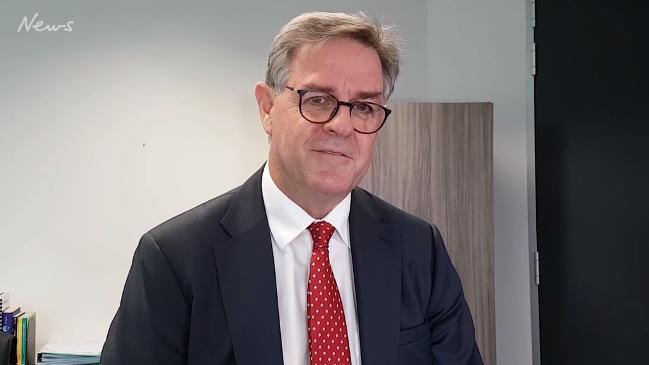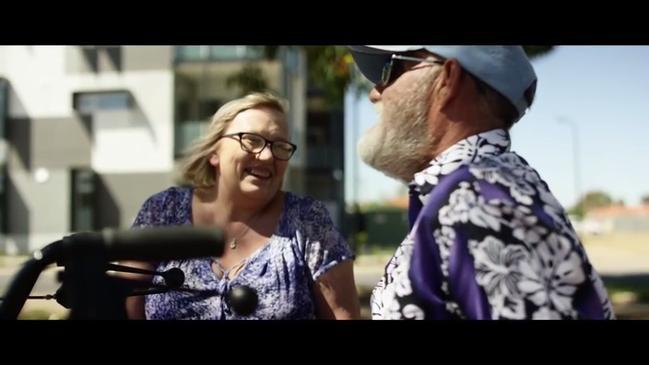Holographic doctors may be part of the solution to clogged EDs
NEW SA Health boss Dr Chris McGowan has outlined ambitious plans to free up clogged EDs and end ambulance ramping which includes much more care at home — including holographic doctors.

SA News
Don't miss out on the headlines from SA News. Followed categories will be added to My News.
BEDSIDE holograms of doctors in your home, digital clues to head off mental health issues and trying to empty hospitals of more than 30 per cent of patients — these are some of the visions of SA Health’s new chief executive Dr Chris McGowan.
In a frank interview with The Advertiser in which he readily admits the world-class system is not foolproof, Dr McGowan outlined plans to get much more value from the scheme.
A fundamental shift will be more treatment at home, which in turn will free up emergency departments and ward beds, reduce ambulance ramping and cut patients waiting time for treatment.
Dr McGowan savaged the former Labor government’s 2012 McCann Review of Non-Hospital Based Services, saying it stripped South Australia of much-needed care outside hospital settings.
“The McCann report essentially denuded the state of a lot of things that keep people out of hospital,” he said.
“Other states are doing a lot around how you get people out of hospital quickly, what you do at home.
“Every other state has packages that will go home with you, nursing services that will go home with you, so it’s a very efficient and quite a maturing part of the business.”

Dr McGowan said a study in Sydney showed that even with such home services available, around 35 per cent of people in public hospitals did not need to be there as they could get their care at home.
“So think of our public hospital system and that, very conservatively, some 30 per cent of people don’t need to be there – what happens is people would flow through the ED much quicker, you get through to the wards quicker, surgery keeps flowing,” he said.
“One of the key things we want to do is really build that out of hospitals, so that capacity is building in the community.”
This home care goes far beyond an occasional visit by a nurse, and will be helped by technology.
“In my last job in Perth we were running a virtual hospital – before I left I saw a hologram of a doctor in a person’s home,” Dr McGowan told The Advertiser.

“So imagine you are in bed at home and you are talking to a doctor as real as me who is a hologram.
“The patient with advanced lung disease was talking to his doctor, a full sized hologram, sitting on the side of his bed at home rather than being in hospital.”
The home care – which surveys show many people prefer – would include services normally delivered in hospitals, from IV antibiotics to drains and wound care.
Technology changes which brought disruption to industries such as banking – ATMs then online accounts replacing brick-and mortar branches – have not yet had the same effect on health, Dr McGowan said, but they will require some investment.
“Of course the thing is in a state that hasn’t got a lot of money and a hospital system soaking up a quarter of a billion dollars more than it would be if it were in any other state, we have to try to get that money to invest in,” he said.
However, that investment can also cut health care costs.
Dr McGowan said the system is structured so people see a GP when they are a bit ill, but head to hospital when it worsens, with a distinctive gap in between.

“That has to change,” he said, noting an older person with several chronic conditions and on multiple medications may cost the system around $20 to $30 a day while at home getting GP care.
“Once they get a little too ill to be looked after by a GP in a clinical situation they kick up into a $1500 a day, world’s best health care system – we need to populate the gap between those things so people have the right level of care, when they need it, in a convenient way, at a low cost,” he said.
Another factor needing attention is lack of co-ordination between various levels of care.
“Some people bounce between GPs, pharmacists, they are in and out of hospital, in aged care or getting aged care at home,” Dr McGowan said.
“They are trying to navigate all that and understand the disease they are dealing with. We believe we have to change that and put it all in one envelope.”
Digital technology will help, Dr McGowan predicted, so when a person has care in different settings it is all logged on one electronic record which can be monitored.
Digital tracking can also help raise alarms for emerging mental health issues for early intervention, down to things as simple as social message ads advising where to seek help for people whose online behaviour may show signs of struggle.
“When we talk about cost I am obsessed with value,” Dr McGowan said. “I don’t think our health system is delivering the value it could if we reconfigured. It’s about value – more of it, better, for the same price.”



